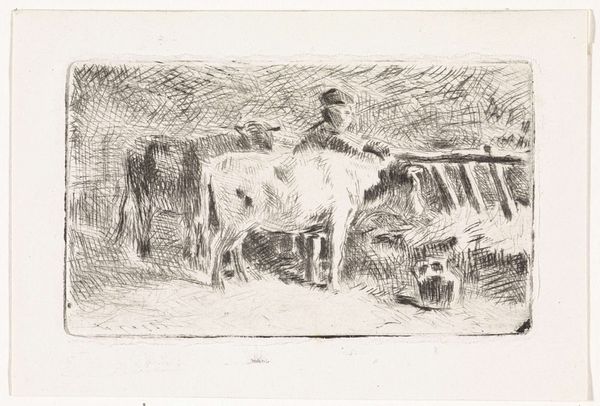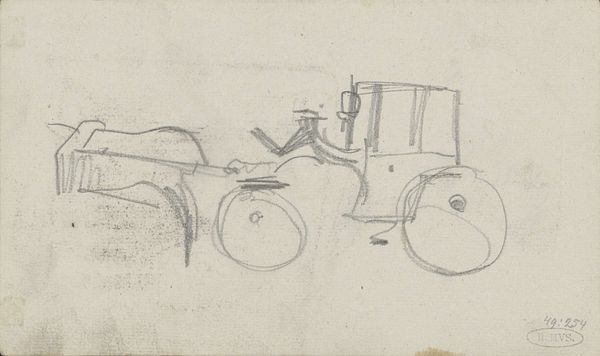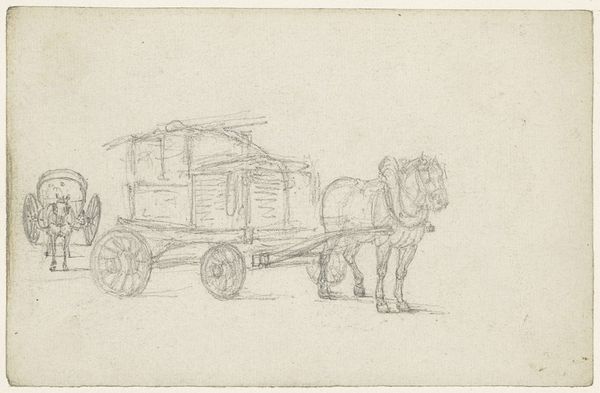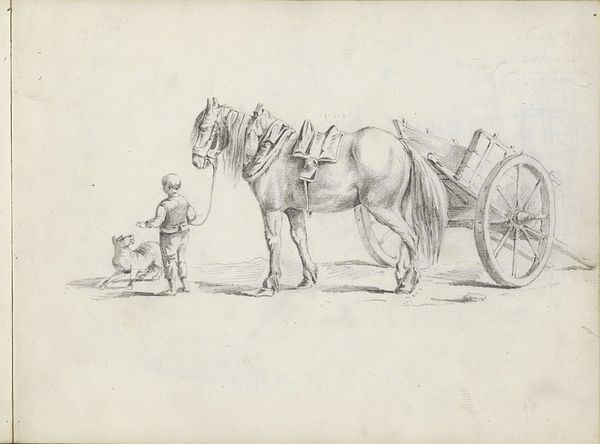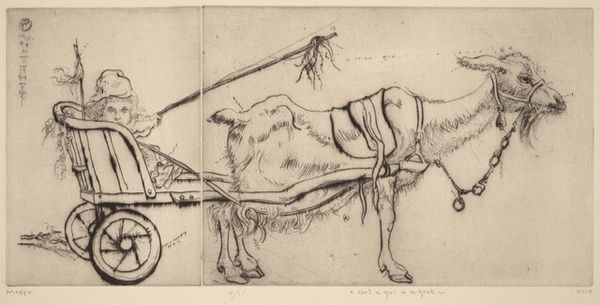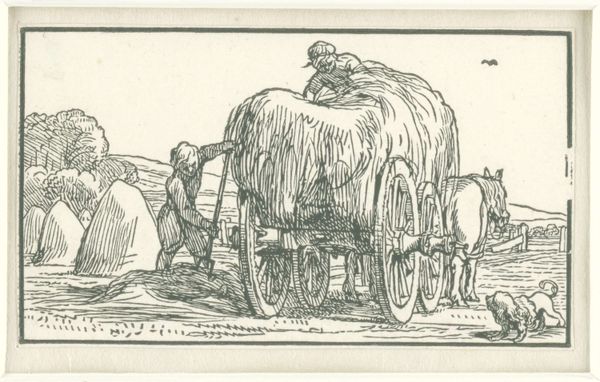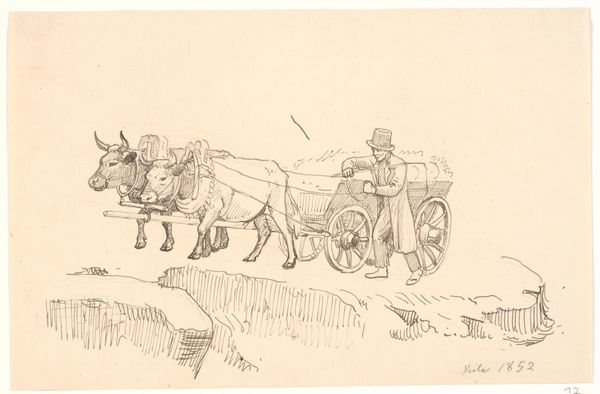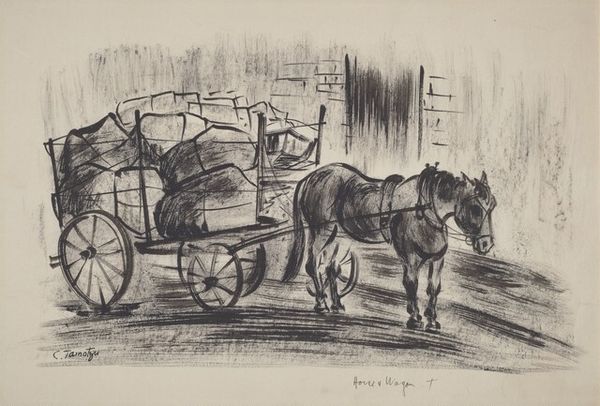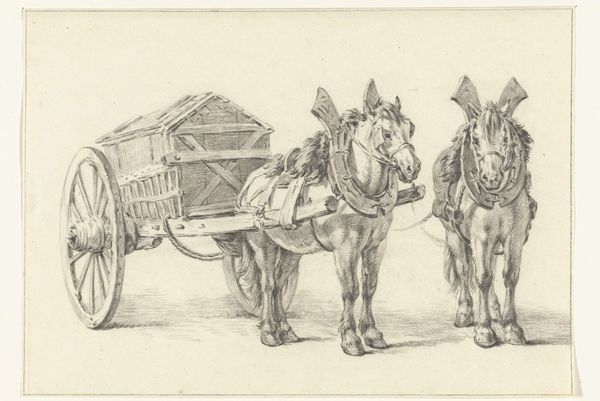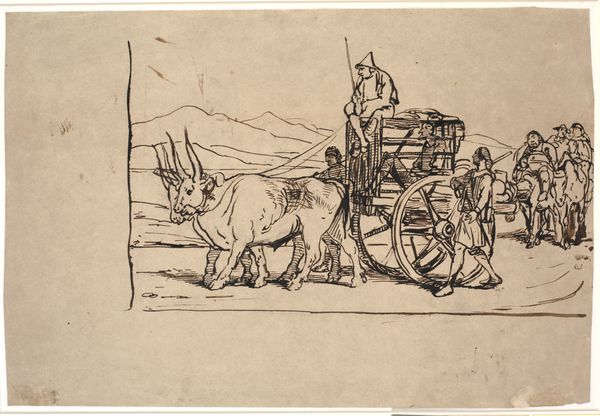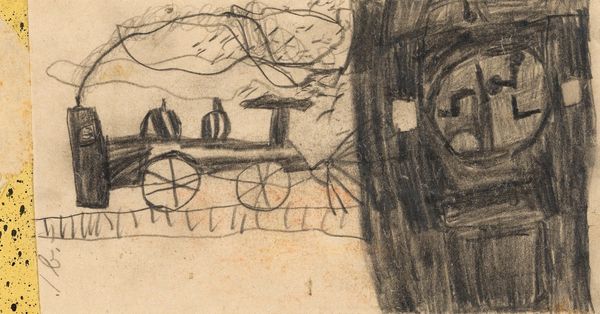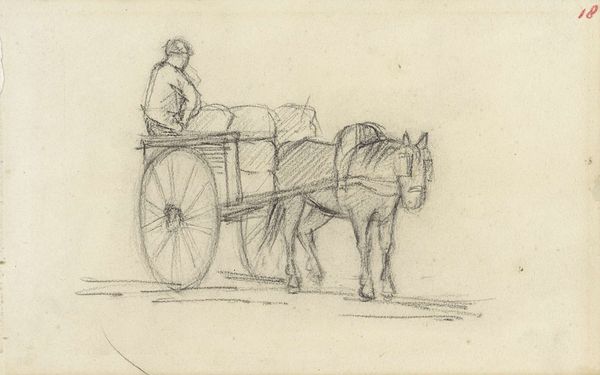
Dimensions: height 327 mm, width 494 mm
Copyright: Rijks Museum: Open Domain
Charles-François Daubigny made this drawing, "Oxcart, Darkly Profiled Against the Sky," using graphite. As a painter of rural France, Daubigny's images had a distinct public role. They came at a time when the country was undergoing rapid industrialization, raising questions about the value and the future of agricultural life. Consider, for example, how the sketch depicts a traditional farming method: a man using oxen to pull a wagon. The image is stark. It focuses on the dark form of the oxcart against a light sky. How might Daubigny be using this contrast to comment on the changing social structures of his time? Is the darkness meant to convey the hardships of agricultural labor? Or does the oxcart’s clear outline imply its resilience? An art historian might explore such questions by examining agricultural records from 19th century France, as well as Daubigny's relationship to the Barbizon School. The meaning of art, after all, is always contingent on its social context.
Comments
No comments
Be the first to comment and join the conversation on the ultimate creative platform.
